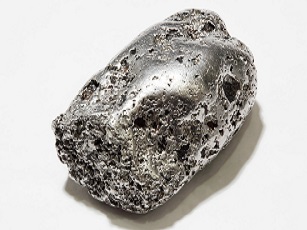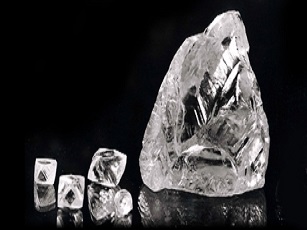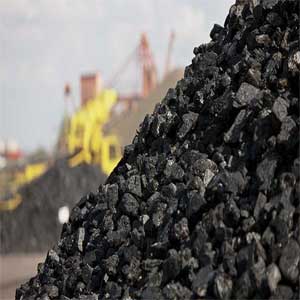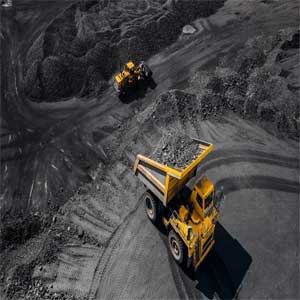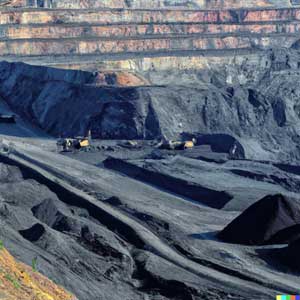COAL
COAL :
Composed mainly of carbon, hydrogen, and oxygen, coal is a combustible rock of organic origin with lesser amounts of nitrogen, sulfur, and other elements. Usually known as a fossil fuel, it is a readily combustible fuel source. The emissions or discharge from coal are somewhat higher than petroleum. Utilized as an energy resource throughout history, coal has been primarily burned for the production of electricity and is also used for industrial purposes, such as refining metals. Coal is known for its two universal purposes: it is the largest source of energy for the generation of electricity, and it is the largest anthropogenic source of carbon dioxide emissions. Although this process has been known since 1880, some deep mining works took place in the early 1500s in North East England and along the Firth of Forth coast.
Deep shaft mining began during the late 18th century and progressed extensively in the UK. When the industry peaked, it underwent rapid expansion throughout the 19th century and early 20th century. Mined in various parts of the world, coal mining continues to be an important economic activity. Currently, over 6185 million tonnes (Mt) of hard coal are produced worldwide.
MINING:
Extraction methods:
Based on the quality of the seams and depth, along with geology and environmental factors, the most economical method of extraction is considered for coal seams. These methods vary depending on the operation level, whether on the surface or underground. Coal extracted by these means requires washing in a coal preparation plant. Basic extraction methods include surface mining and deep underground mining.
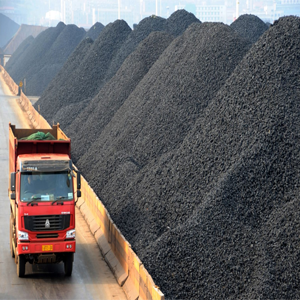
Surface mining:
In general, seams that are comparatively close to the surface, with a depth of less than about 180 ft (50 m), are surface mined. Surface mining is preferred only when the coal seam is near the surface, at a depth of less than 180 feet. It is the most efficient method when 90 percent of the coal or more can be recovered. The overlying soil is excavated by explosives to expose the coal seam for extraction. The topsoil and overburden material are then removed by shovels and trucks, which are saved for lateral purposes. The coal seam is then drilled, fractured, and systematically mined. It is then loaded through conveyors, excavators, draglines, and power shovels to extract the coal. When coal is available in a large square kilometer, large pieces of equipment are used. Machinery with bucket wheels and trucks are used to excavate the coal. Open-pit or surface mining uses the land only temporarily, and later rehabilitations of the lands are done after the coal extraction.
Surface techniques can be classified into contour strip mining, area strip mining, open-pit mining, and auger mining. The nature and thickness of the strata overlying the seams will decide the mining methods.
In modern mining, technological advancements have increased production more than ever before. In this process, coal is extracted with greater efficiency. Complex machinery makes everything simpler.
Underground mining :
Coal at depths of 180 to 300 ft (50 to 100 m) is deep mined, although in some cases, surface mining techniques are implemented.
Underground mining is employed when coal is present at depths of 180 to 350 feet. Room and pillar mining and longwall mining are the two types of underground mining. In room and pillar mining, a network of rooms is cut off, leaving behind pillars. Only 40 percent of the coal is extracted initially, and the remaining is extracted at a later stage. Longwall mining is more efficient compared to other methods. In longwall mining, coal is fully extracted from the section of the seam or the face using mechanical shears.
The length of the coal face varies from 100 to 350 m. This process is risky, as a hydraulically powered system temporarily holds up the roof while the minerals are extracted. The roof is then allowed to collapse after the completion of the coal extraction. The capital cost of longwall mining is generally high and is only approved when coal is present in large quantities.
Shortwall mining is similar to longwall mining, except the block of coal is not more than 100 meters. After the coal is extracted, it is sent on conveyors for the refining process.
Having said that, different types of techniques come into play in the aforementioned extraction methods!
Production:This significant energy resource is commercially mined in over 50 countries. Europe's coal production, when compared to Asia, shows a significant decline. With 16% of hard coal production being exported, most of it is used in the country of origin.
Modern mining: With technological advancements, coal mining has become more productive.
TYPES OF COAL :
Anthracite Coal
-
Bituminous Coal
-
Sub-Bituminous Coal
-
Lignite Coal
Anthracite Coal mining : Anthracite coal is a form of coal mined from hard coal deposits and is the highest grade of coal. It is an extremely hard and shiny coal used for home heating and industrial purposes. The mining of anthracite coal requires special techniques and is more complicated than mining other forms of coal. The first step in mining anthracite coal is to remove all the overburden, the material covering the coal deposit. This is done using large machinery to excavate and remove the material. Once the overburden is removed, the area is ready for the actual mining process.
The next step is to use explosives to break up the coal bed into small pieces. This is done by drilling holes into the coal bed, placing explosives in the holes, and detonating them. This process, called blasting, breaks up the coal bed. Then, large machinery such as draglines or shovels removes the pieces of coal, which are transported to a wash plant where the coal is separated from the waste rock and dirt.
The coal is sorted into different sizes using a process called sizing. After this process, the coal is ready to be shipped and used as fuel. The mining of anthracite coal is a complicated process, but it is necessary to produce enough fuel to meet the world's demands. It is an important part of the energy industry and vital to our economy.
Bituminous Coal mining : Bituminous coal is a type of sedimentary rock formed from naturally compressed peat. It has a relatively high carbon content and is generally harder than lignite and anthracite. It is the most common type of coal used in electricity generation in the United States and is also commonly used to produce coke, an essential fuel and reactant in the production of steel.
Mining bituminous coal involves various techniques and processes. First, a mining company must secure the rights to a certain area to extract the coal. Once the rights are secured, a team of geologists and engineers conducts surveys to locate promising coal beds. Then, surveyors and miners begin extracting the coal, usually through surface mining. This involves using heavy machinery to remove the top layer of soil and rock to expose the coal seam. Miners then use pickaxes, shovels, and other tools to extract the coal, which is loaded onto trucks or conveyor belts and transported to the processing plant.
At the processing plant, the coal is crushed and sorted by size. Smaller pieces are washed to remove impurities and dried, while larger chunks are typically sent to coal-fired power plants to generate electricity. After mining, processing, and burning, residual ash containing heavy metals, sulfur, and other pollutants must be properly disposed of to protect the environment, often in landfills or surface impoundments.
Sub-Bituminous Coal mining : Sub-bituminous coal is generally black in color and dull in appearance, with a higher heating value than lignite. It is primarily used for generating electricity, as well as for home and industrial heating. Mining sub-bituminous coal is similar to mining other types of coal, with the main difference being the depth of the coal seam. It is usually found in the western United States and Canada and is mined using both surface and underground techniques.
In surface mining, large machinery removes the top layers of soil and rock to expose the coal seam. The coal is then loaded onto trucks and taken to a processing plant. In underground mining, tunnels are dug to access the coal seam, and explosives are used to break it up. Conveyor belts then transport the coal to the surface.
After processing, the coal is transported to power plants for electricity generation or to factories for use in manufacturing and industrial processes. Sub-bituminous coal is a clean-burning and efficient form of energy. However, mining operations can have a significant environmental impact, particularly in terms of air pollution. Therefore, it is important for mining operations to be managed responsibly to minimize their environmental impact.
Lignite Coal mining : Lignite mining involves the extraction of lignite, a type of coal, from underground mines. Lignite is typically extracted using either surface mining or underground mining techniques. Surface mining is the more common method, which entails removing the soil and rock above the lignite seam and then excavating the lignite with heavy machinery. On the other hand, underground mining is a more complex and costly process that entails digging a shaft or tunnel down to the lignite seam and then extracting it with specialized equipment.
After extraction, the lignite is transported to a processing plant where it undergoes crushing, washing, and sorting into various grades and sizes. Subsequently, the lignite is loaded onto ships for transportation to end markets. It can be used directly as fuel or processed into products such as briquettes or pellets, which serve as fuel in power plants or for other industrial applications.
Lignite mining is subject to stringent regulations due to the environmental and safety risks associated with it. Mining companies must comply with various regulations to ensure the safety of workers, protect the environment, and safeguard surrounding communities. Additionally, emphasis is placed on land reclamation and restoration efforts once the mine is no longer operational.

